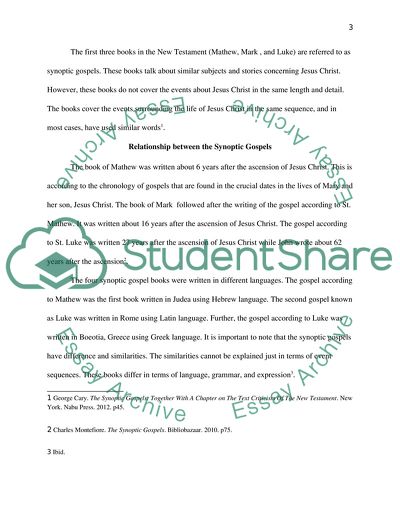Cite this document
(Synoptic Gospels Essay Example | Topics and Well Written Essays - 2000 words, n.d.)
Synoptic Gospels Essay Example | Topics and Well Written Essays - 2000 words. https://studentshare.org/religion-and-theology/1778554-give-a-history-of-the-investigation-into-the-relationship-between-the-synoptic-gospels
Synoptic Gospels Essay Example | Topics and Well Written Essays - 2000 words. https://studentshare.org/religion-and-theology/1778554-give-a-history-of-the-investigation-into-the-relationship-between-the-synoptic-gospels
(Synoptic Gospels Essay Example | Topics and Well Written Essays - 2000 Words)
Synoptic Gospels Essay Example | Topics and Well Written Essays - 2000 Words. https://studentshare.org/religion-and-theology/1778554-give-a-history-of-the-investigation-into-the-relationship-between-the-synoptic-gospels.
Synoptic Gospels Essay Example | Topics and Well Written Essays - 2000 Words. https://studentshare.org/religion-and-theology/1778554-give-a-history-of-the-investigation-into-the-relationship-between-the-synoptic-gospels.
“Synoptic Gospels Essay Example | Topics and Well Written Essays - 2000 Words”. https://studentshare.org/religion-and-theology/1778554-give-a-history-of-the-investigation-into-the-relationship-between-the-synoptic-gospels.


